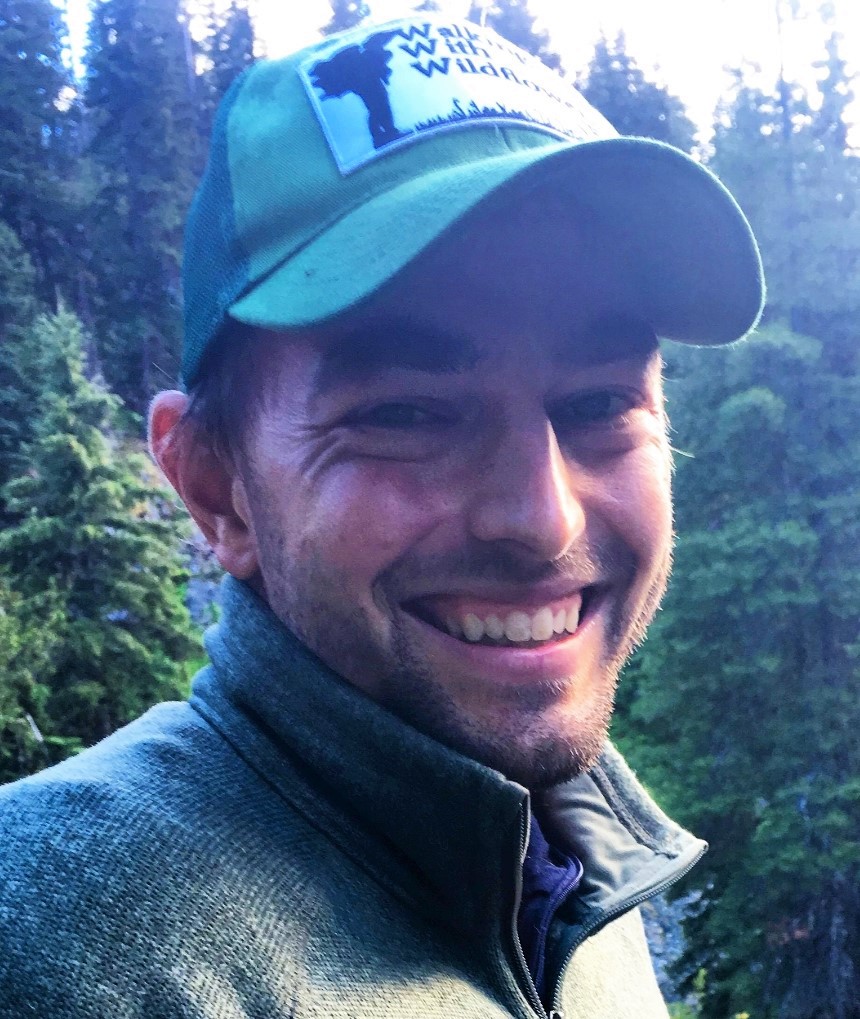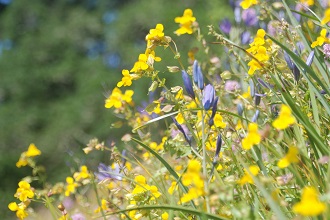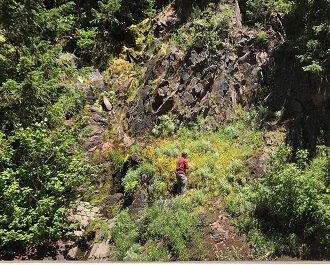About the department: Everything about UL-Lafayette is warm – the friendly people, the Cajun and Creole food, and the Gulf Coast Climate. Our Department of Biology houses an abundance of great evolutionary biologists relative to its size as the PhD that we award is in Environment and Evolutionary Biology. Our most unique feature is a functioning cypress swamp in the center of campus just steps outside the Biology building.
About the research: My research focuses on understanding how often local adaptation occurs in nature and the genetic and physiological mechanisms that either constrain or facilitate local adaptation. I currently study these basic questions in context of examining potential responses to climate change, determining why some species become invasive, and investigating why specific trait syndromes recurrently evolve across the tree of life. I use a variety of approaches to address these questions, combining field studies, manipulative experiments and population genetic theory with modern genomics and bioinformatic tools to determine how patterns of genetic and phenotypic variation have evolved across space and time.
What has been the biggest challenge as a new PI so far? None of the challenges that I have had on the job have come close to the difficulty of getting a tenure track position and cracking the two-body problem. However, the biggest challenge for me since starting has been to temper my own expectations for myself. We all come in absolutely gung-ho to get started and do all the things, and so it can be disappointing when you are not immediately producing the results or the papers with the efficiency that you had in your postdoc. The fact is that it takes a while to fill out the lab both in terms of equipment and people, and the skillsets required to accomplish these tasks are not that same as those as I used in graduate school and postdoctoral work. Odd questions come up; for instance, I never really thought about the electrical requirements of a molecular lab and while renovating the lab, I had to know how many electrical outlets I wanted, locations for the outlets, and voltage requirements. How many thermocyclers can I plug into one circuit? What about the plant growth chamber requirements? These are the little things that lead to decision fatigue. More broadly, I want to build a lab that will fit our current and future research needs and create an inclusive and empathic culture, and this needs to take precedence over an immediate productivity.
Do you remember your first publication in Evolution or Evolution Letters (acceptance or rejection)? I most certainly remember both my first rejection and my first accepted paper. They came nearly 6 years apart! What stood out both times was the quality of reviews that I received. The rejection came at the end of my graduate work. I submitted a paper examining how clines in a plant defense called cyanogenesis, or the ability to produce hydrogen cyanide after tissue damage, evolved over similar environmental gradients in geographically disparate regions where white clover was introduced. The decision was a reject with the caveat that resubmission would be considered if I added another experiment. This experiment was exactly the direction I wanted to go next, but it would have to wait because I needed to graduate. The reviews were detailed and on point - paper simply did not measure up to the impact expected in
Evolution (a slightly revised manuscript was accepted at
Heredity soon after). My first accepted publication in
Evolution examined patterns of character displacement across an elevation gradient in two co-occurring species of monkeyflower. The review process really helped this paper. The AE, Amy Angert, posed a series of questions that helped us put some unusual results into a broader conceptual framework. In both cases, the review processes helped me as an early career scientist by pushing me outside of my current thinking and helping me to be critical of my own work. I really value the quality and collegial reviews that I have gotten at society journals (particularly
Evolution,
The American Naturalist, and
Ecology).
How did you get interested in evolutionary biology? I don’t have the classic story where I was interested in specific organisms or ecosystems when I was a small child or adolescent. I simply started taking all the ecology and field classes that I could during my undergraduate work at Valparaiso University because I really enjoyed being outdoors and thought environmental conservation was important. Really by luck of the draw, I got assigned to an amazing advisor, Dr. Rob Swanson, and he got me involved in molecular plant genetics and evolution. I was drawn into evolutionary biology by plant secondary compounds. Not necessarily abusing any of these compounds, but thinking about their origins and purpose. There are over 400,000 known plant secondary metabolites, but so many of the common chemical defenses have evolved multiple times in different clades in the angiosperm tree of life. For instance, cyanogenesis has evolved at least 13 separate times! Unlocking this paradox drove me to graduate school and into thinking about functional constraints to evolution and the genetic architecture of adaptation. Understanding the evolution of plant defense is still a major part of my research program and has provoked many of my thoughts on the evolution of functional trait syndromes and the genetic basis of adaptation.
Are you involved in evolution outreach? Tell us about it. I think evolution outreach is absolutely essential. My main outreach focuses on citizen science and through interacting with educators at secondary schools in my local community. The citizen science work has been through the creation of a program called Walking with Wildflowers in collaboration with USA National Phenology Network and Ben Blackman. The goal of this program is to accumulate phenology data for alpine and subalpine plant species at multiple locations across their ranges by recruiting hikers along the Pacific Crest Trail. Hikers enter basic phenology data for ~20 plants per site into their smartphone. Because there are so many hikers that traverse this trail, we hope to get a complete dataset that extends across many growing seasons. This dataset would be ideal to examine which plant species are unable to shift reproductive phenology with changing climates. Check out our website:
https://pct.usanpn.org/. I also have been getting involved with evolution outreach at local high schools in Louisiana. We have a number of modules that we bring into these classrooms. My favorite module was designed by Ken Olsen that I helped refine during my graduate work. This module allows students to survey local white clover populations for the cyanogenesis polymorphism, use Mendelian genetics and Hardy Weinberg Equilibrium to determine local allele frequencies, and compare their results with other classes across the world. Check it out here:
https://pages.wustl.edu/cloverproject
A last piece of outreach is in the context of a large collaborative group – the Consortium for Plant Invasion Genomics (CPING). We were recently funded by NSF to use herbarium specimens and genomics to better understand the evolution of invasive species. We also have a large outreach component where we conduct genomics and bioinformatics bootcamps for researchers in EPSCoR states. Check out our website here:
www.invasiongenomics.com.
What one piece of advice would you give to a starting graduate student? I have put some time into thinking about this question as I just started training my first students. My advice to a young evolutionary biologist is to invest time into understanding the theoretical and historical context of your research early in your career. Do this by committing time to reading extensively in your field – not just the papers that came out in the last decade or two, but back to Darwin, Fisher, Wright, Dobzhansky, Simpson, etc. It is amazing how insightful these early evolutionary biologists were and how often the same debates recur through time. This approach has helped me frame my research in the broadest possible context.
Do you remember making any mistakes as a trainee; how did you recover? So many mistakes…. One particular mistake that I have made over and over is failing to adequately proofread emails, manuscripts, grant proposals, etc. During my first year as a graduate student, I emailed a professor at another university that I had never met, but I was interested in collaborating with because he worked with a particularly interesting plant species. I was so enthusiastic that my email came off as informal. I got a scathing email in reply with my advisor cc’ed, and learned a lesson about how to make first contact with potential collaborators. When I applied for an NSF postdoctoral fellowship, I spelled the scientific name of my new focal species wrong in two different ways! A reviewer definitely caught it and mentioned it in their review. I must have spent hours proofreading that grant and still missed it. Finally, my first year applying for faculty positions, I managed to accidentally miss the ‘l’ in public in my cover letter for four schools. I hope the search committees got a chuckle out of it because this incident is burned into my memory. I do not think that these careless errors can ever be completely avoided, but now I read everything I write out loud and recruit more help proofreading.
 Nicholas Kooyers
Nicholas Kooyers
